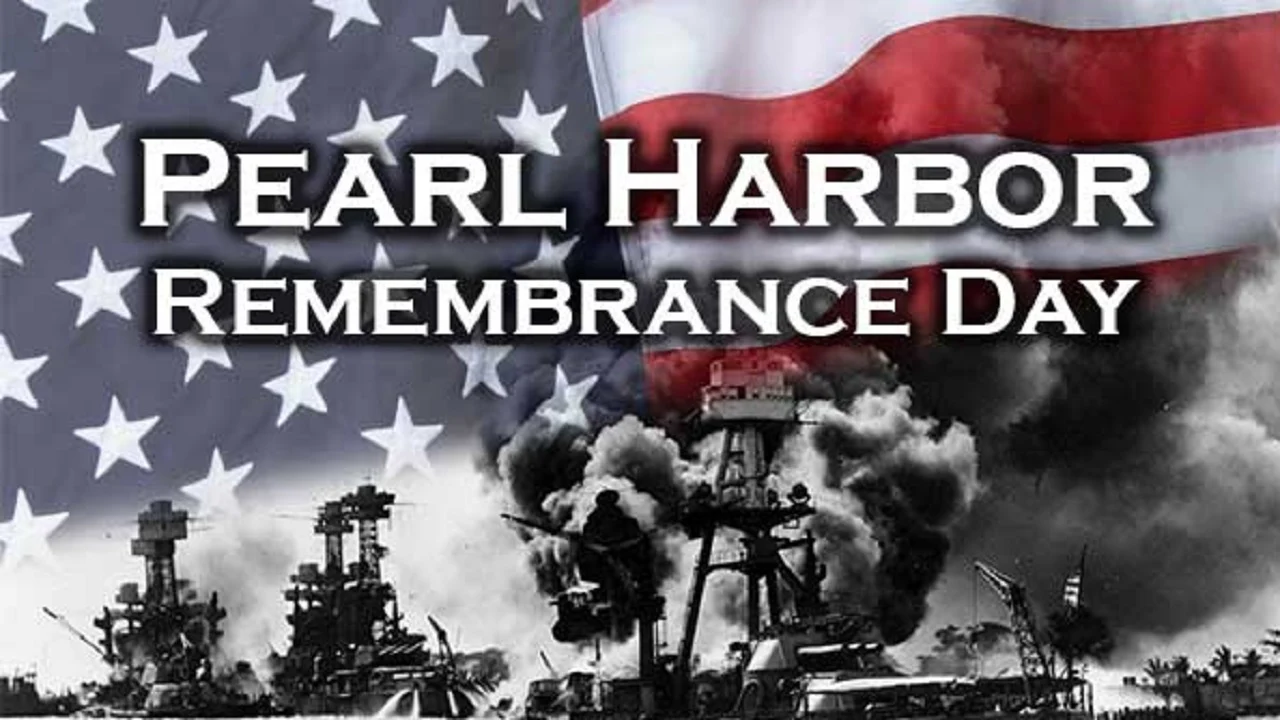Every year on December 7th, the United States observes Pearl Harbor Remembrance Day, a solemn occasion that pays tribute to the lives lost and the heroic actions taken during the devastating attack on Pearl Harbor in 1941. This day holds significant historical and emotional importance as it serves as a reminder of the impact of war and the resilience of a nation.
Pearl Harbor Remembrance Day: Honoring the Legacy of Sacrifice
Pearl Harbor Remembrance Day stands as a testament to the memory of the thousands of individuals who were affected by the attack that thrust the United States into World War II. It is a time to reflect on the events that unfolded on that infamous day and to honor the bravery and sacrifices of those who endured unimaginable hardship.
On the morning of December 7, 1941, the tranquility of Pearl Harbor was shattered when the Imperial Japanese Navy launched a surprise military strike on the U.S. Naval Base. The attack was swift and devastating, targeting the heart of the Pacific Fleet. Battleships were sunk, aircraft were destroyed, and lives were tragically lost. The attack on Pearl Harbor left an indelible mark on the nation, altering the course of history and shaping the resolve of a wounded but determined America.
The observance of Pearl Harbor Remembrance Day includes various commemorative events and ceremonies held across the country. These may involve wreath-laying ceremonies, moments of silence, flag-raising ceremonies, and the sharing of personal stories of those who witnessed the attack firsthand. It is a time to listen to the accounts of the survivors, to learn from their experiences, and to honor their resilience and strength.
Pearl Harbor Remembrance Day not only serves as a tribute to the past but also as a reminder of the importance of maintaining peace and preventing such atrocities from occurring again. It calls upon us to reflect on the lessons learned from the past and to work towards a future where conflicts can be resolved through dialogue and diplomacy.
Here is a comprehensive overview of Pearl Harbor, including its significance, the attack, survivors, memorial, and casualties:
1. What is Pearl Harbor?
Pearl Harbor is a natural harbor that serves as a naval base for the United States Pacific Fleet. It is strategically located in the Pacific Ocean and has played a vital role in the defense and projection of American power in the Pacific region.
2. Pearl Harbor Date
The infamous attack on Pearl Harbor occurred on December 7, 1941. On that fateful morning, a surprise military strike was carried out by the Imperial Japanese Navy, targeting the U.S. Naval Base at Pearl Harbor.
3. Pearl Harbor Survivors
Despite the devastation caused by the attack, there were some survivors. Many military personnel and civilians managed to escape or were rescued from the damaged ships and installations. Their stories of survival and resilience serve as a testament to the human spirit.
4. Where did Pearl Harbor happen?
The attack on Pearl Harbor took place primarily at the U.S. Naval Base, which is located on the southeastern coast of the island of Oahu, Hawaii. The Japanese forces launched their assault from aircraft carriers stationed north of the island.
5. Pearl Harbor Memorial
The Pearl Harbor Memorial, also known as the USS Arizona Memorial, is a significant commemorative site built over the sunken battleship USS Arizona. It serves as a tribute to the 1,177 crew members who lost their lives aboard the ship during the attack. The memorial stands as a solemn reminder of the tragic events of that day.
6. What is Pearl Harbor known for?
Pearl Harbor is primarily known for the surprise Japanese attack that propelled the United States into World War II. The attack resulted in significant damage to the U.S. Pacific Fleet and led to the formal entry of the United States into the war.
7. Why did Japan attack Pearl Harbor?
The attack on Pearl Harbor was a premeditated military strike by the Empire of Japan. It was aimed at neutralizing the U.S. Pacific Fleet to ensure Japanese dominance in the Pacific region and to remove the threat of American intervention in Japanese imperial expansion in Southeast Asia.
8. Casualties of the Pearl Harbor Attack
The attack on Pearl Harbor resulted in a significant loss of life and material. The U.S. suffered a total of 2,403 casualties, including 2,008 military personnel and 385 civilians. Additionally, 188 aircraft were destroyed, and numerous ships were damaged or sunk.
The attack on Pearl Harbor remains a pivotal event in world history, marking the entry of the United States into World War II and shaping the course of the conflict. The memory of those who lost their lives in the attack serves as a reminder of the cost of war and the importance of peace and diplomacy.
As we observe Pearl Harbor Remembrance Day, let us remember the lives lost, the bravery displayed, and the sacrifices made. May we honor the memory of those affected by the attack on Pearl Harbor and strive to build a world where peace and understanding prevail.

